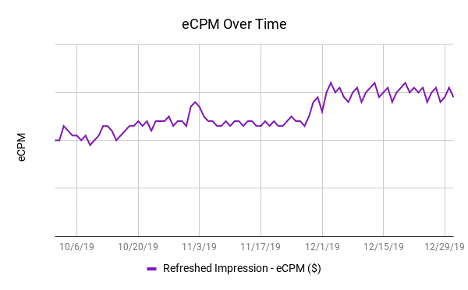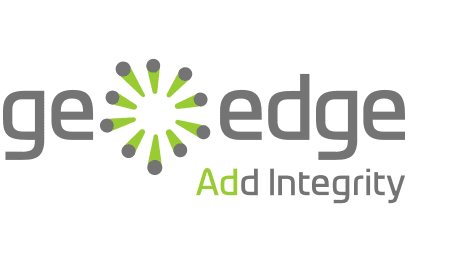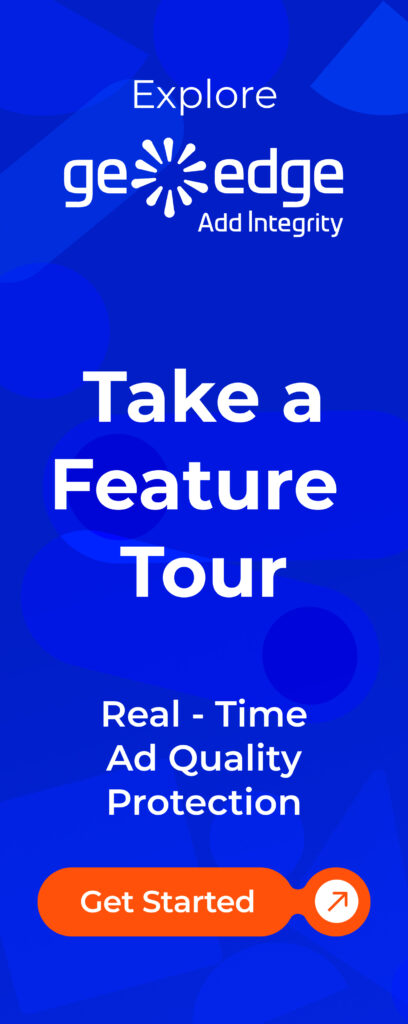It’s early Nov and as a publisher, you know you’re looking at the best two months ahead — in terms of revenue and traffic. eMarketer says that the majority of US shoppers will turn to digital for holiday shopping, and a whopping $190.47 billion will be spent via e-commerce alone during the next two months (that’s a $50 billion YoY increment).
IAB’s recent study shows that there’s light at the end of the tunnel, i.e., digital ad spend is expected to jump in the coming weeks.
So we couldn’t find a better time to talk about how you can maximize your revenue than now. If you think about it, at a higher level, it’s pretty simple. You have to deliver more impressions (volume) that get filled (fill rate) at a better price (eCPM).
Your revenue is directly tied to eCPM, fill rate, and volume of ad impressions.
Higher Revenue = Higher eCPM x Better Fill Rates x More Volume.
So, as a publisher, your job is to ensure you are increasing eCPM, improving the fill rates, and serving the maximum number of ad impressions possible. At first, you might think, I’ve been doing this already. For example, implementing header bidding can have a substantial impact on eCPM, fill rate, thus the revenue.
As you’re likely to be familiar with techniques like header bidding, in this post, we’ll look at how you can improve the factors that impact the three levers — eCPM, fill rate, and volume of impressions, this, in turn, can propel your ad revenue this Q4.
Let’s get started.
1. eCPM
eCPM — the bid from buyers depends on how valuable your impressions are to them. They grade the ad requests (or impressions) based on several factors but here’s how you can ensure that your impressions are getting valued properly.
A. User IDs:
User IDs refer to the shared IDs given to users on your site so that ad tech partners can identify the users easily and skip the inefficient cookie syncing process.
Without shared IDs, ad tech platforms have to sync their cookies with each other and that results in loss of audience. An average match rate of 40% to 50% is considered good. Using ID solutions can boost the match rate. For instance, The Trade Desk claims the match rates with Index Exchange was at 99 percent when both used Unified ID (ID solution from The Trade Desk).
As a publisher, you can leverage ID solutions to increase the match rates and so the bids. Increased bids result in better competition and higher eCPM.
B. Viewability and CTR:
This comes as little surprise as CTR reflects the success of an ad campaign. Having a decent CTR itself is hard let alone increasing it to impressive numbers. So how do you do it?
One, ensure that the viewability is high (not just 51%) and two, make sure that the users are keeping the ads in browser viewport long enough so that the ads get the attention of the users in the first place. Without increasing time in view, you can’t expect the CTR to go up.
At Automatad, we help our publishers to deliver additional highly-viewable ad impressions that stay in view to an engaged user for at least 25s with Active Exposure Time (AXT). In other words, we trade attention to buyers. And, this, in turn, shoots up viewability and CTR substantially.
In fact, we recently analyzed tens of millions of impressions from our publishers, and here’s the impact: Ad viewability increased by 364%, CTR by 412%, and eCPM doubled.
C. Ad Experience:
Now your next question would naturally be — how to increase time-in-view of ads? Improve ad experience and there are three quick ways to do it:
- Use the right ad placements and units. For instance, sticky ad units on the footer/sidebar. As they tend to stay in view for a longer period compared to say, in-article units, you’ll get better viewability and CTR. That being said, it’s important to prioritize user experience. After all, if users leave the page too soon, no placement can do the trick.
- Leverage technologies like AXT or set triggers to deliver ads on top of existing placements (i.e., ad refresh) only when certain conditions are met (we’ll look into this more below). Don’t just add new units for the sake of it.
- Understand where your users are engaged and see if you can create new ad opportunities there without disrupting the experience. Another way to look at this is to create new opportunities and ensure users are engaged when they scroll to the position. How? Ensure you deliver the most value either by creating interactive content or answering the important questions there.
To put it simply, use a barbell strategy. On one end, you have the content that is most likely to engage users, and on the other, you have placements. See how both can go hand-in-hand to create a win-win situation.
D. Traffic Sources:
Typically certain traffic sources can get you better eCPM/revenue. Say, Google Search. Understand what sources get you the highest eCPM and focus your attention on increasing hits from those channels. If it is Google, stay on top of SEO trends. Is it Facebook? Develop a strong content marketing strategy to maximize users from Facebook pages and groups.
2. Fill Rate
A. Demand Partners:
While header bidding enabled publishers to connect with multiple demand partners directly, it also led the industry to SPO. This means buyers are continually figuring out the best supply path to reach your inventories.
What do you need to do? Ensure you are connected to the best supply-side platforms that can bring in unique demand and buyers at scale. Demand partners aren’t going to bid equally and it’s better to track bid rate, win rate, and timeout rate to keep the setup efficient. Try to avoid redundancy.
B. Pricing Rules:
It’s easy to see publishers increasing floor prices during Q4. Though it makes sense, track the fill rates diligently and go granular while assessing the impact on revenue — see the impact of new floor prices by device, geography, inventory, and more. 2020 has been different from the previous years and if there’s one thing you can be certain about — its uncertainty.
Advertisers are going to change the spending and adjust the bids based on the results and you need to keep up.
Pro tip: Ensure the floor price is the same across open bidding and header bidding. Because of Unified Pricing Rules (UPR), you set a common floor price for all the non-guaranteed line items including header bidding. But header auctions happen before the ad server is called so it’s important to ensure you send the floor price information to bidders either via the header bidding wrapper or individual SSP settings.
C. Formats and sizes:
Yes, certain ad sizes are must-haves, and changing the ad formats can impact the fill rate drastically. If you haven’t experimented till now, Q4 isn’t the best time — here are the best ad sizes you should go with and you can also run multi-size ad units (enable different floor prices for the sizes).
When it comes to formats, both in-stream video ads and standard display ads can beat the rest. In case you are running content suggestion units (say, Taboola), ensure you aren’t under-pricing them as buyers can reach the same users via these units for lesser bids. Depending on your site, you can also try Amazon’s native shopping ads as the sales tend to soar — so do the advertising.
D. Latency:
DSPs can adjust their bids and change their bidding strategies based on the domains and placements. This is on top of other optimization capabilities like device, time of the day, user, etc. As a publisher, ensure you are optimizing the header auctions and that the ads render instantly. Buyers wouldn’t want to bid when ads are too slow to render or not viewable. Especially if the bids are being adjusted at the domain level, one unit can decrease the bids coming from a DSP across the site.
3. Volume of Ad Impressions
A. Refresh Ads:
Ad refresh is on the rise and almost all the publishers are refreshing ads one way or the other. The reason is obvious. You can increase the number of impressions and so maximize the revenue per session.
While Google Ad Manager’s ad refresh is most common, it isn’t the best. When you refresh ads, use a combination of triggers — i.e., ensuring viewability conditions are met, the user is active, and there’s enough time interval, it can help you deliver viewable impressions that can go up in market value over time.

The chart shows the eCPM of refreshed impressions delivered via AXT over three months.
B. Load Ads Dynamically:
As a publisher, you can see how the pages and the content can vary from one another considerably. So, don’t just go with the fixed number of units on the page that spans across the site — regardless of layout, content length, and user engagement. Come up with different ad placements based on layouts and better yet, dynamically load ads based on content length and scroll depth.
C. Increase pageviews and session duration:
This is quite straightforward but many tend to overlook it. Rather than utilizing the sidebar and space at the end of the article for content suggestions that direct users to a different site, use them to increase pageviews. Platforms like Taboola can help in this case too. Produce interactive content that nudges users to engage with the content and drive them to different pages based on their actions.
What’s Next?
As we all know, your bottom line depends on all three interdependent levers. So, you can’t just deliver more impressions and expect the revenue to go up. You need to take a holistic approach that considers eCPM, fill rate, and volume of impressions, and see how you can improve a factor without negatively impacting the others.











